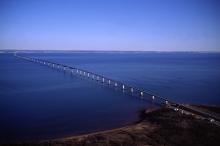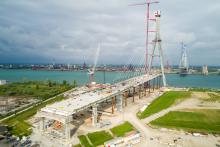The Canadian Atlantic province of Prince Edward Island will invest around US$170 million over four years to improve roads, including resurfacing 270km of highways.
Projects will include the replacement of 18 bridges, according to a statement from Infrastructure Canada, a federal agency through which the central government will funnel $83.5 million towards the work. The province will provide $86.5 million, noted the agency.
PEI is one of the three maritime provinces and is the smallest province of Canada in both land area and population around 155,300 residents but with a high tourist population in summer months. The island of 5,660km² produces 25% of Canada's potatoes.
Ferry services linked the island to the mainland until 1997 when the Confederation Bridge (pictured), spanning the Abegweit Passage of the Northumberland Strait, was opened at a cost of $1 billion and after four years of construction. The 12.9km toll bridge is the world's longest bridge over winter ice-covered water. The multi–span post-tensioned concrete box girder structure has 543 spans with the longest being 250m.
Through the Investing in Canada infrastructure plan, the Canadian government is investing more than $136.5 billion over 12 years in public transit projects, green infrastructure, social infrastructure, trade and transportation routes and Canada’s rural and northern communities.
More than $7.6 billion of this funding will support trade and transportation projects, including $3.8 billion that will be available for investment through the Canada Infrastructure Bank.
Road improvement plan laid out for Canada’s Prince Edward Island
The Canadian Atlantic province of Prince Edward Island will invest around US$170 million over four years to improve roads, including resurfacing 270km of highways.
Projects will include the replacement of 18 bridges, according to a statement from Infrastructure Canada, a federal agency through which the central government will funnel $83.5 million towards the work. The province will provide $86.5 million, noted the agency.
PEI is one of the three maritime provinces and is the smallest province of Cana









